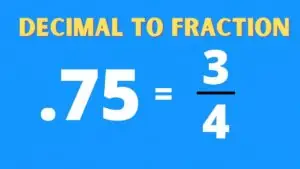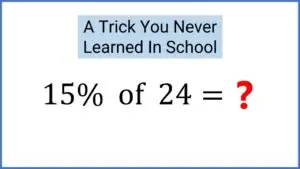In the realm of mathematics, the term “difference” holds a significant place. It represents one of the fundamental mathematical operations and plays a crucial role in various mathematical concepts and calculations. Understanding what difference means in math is essential for building a strong foundation in numerical reasoning and problem-solving. For students who wish to delve deeper or need additional assistance, choosing the best language tutoring website that can offer more resources is very important.

✅ AI Essay Writer ✅ AI Detector ✅ Plagchecker ✅ Paraphraser
✅ Summarizer ✅ Citation Generator
Difference in Math: Definition and Significance
Difference in math refers to the result obtained by subtracting one number from another. It represents the numerical variance or contrast between two values and tells us how much one number differs from the other. The difference between two numbers can be determined using the mathematical operation of subtraction. This operation involves subtracting the smaller number (subtrahend) from the larger number (minuend) to obtain the difference.
Understanding the concept of difference in math is essential as it allows us to compare and quantify the distinction between two quantities. It provides a measure of the numerical gap or variance between numbers, enabling us to analyze relationships, make comparisons, and solve various mathematical problems.
Difference in Math Symbol: Minus (-)
In mathematical notation, the symbol used to denote difference is the minus sign (-). When performing subtraction, the minus sign indicates the operation of finding the difference between two numbers. It signifies that we are subtracting the subtrahend from the minuend to obtain the resulting difference.
Now that we have grasped the fundamental definition and symbol of difference in math, let’s explore different scenarios and methods used to find the difference between numbers.
Finding the Difference between Numbers Using a Number Line
One effective method to find the difference between smaller numbers is by utilizing a number line. The number line provides a visual representation of the numerical sequence, allowing us to easily determine the difference between two values.
Example: Finding the difference between 4 and -6 on the number line
To find the difference between 4 and -6 on a number line, we start with the minuend (4) and move to the left towards the subtrahend (-6). As we move from 4 to -6, we traverse a total distance of 10 units. Therefore, the difference between 4 and -6 is 10.
Using a number line can simplify the process of finding the difference, especially when dealing with smaller numbers. It provides a visual aid that aids in understanding the concept of numerical variance.
Finding the Difference between Two Numbers
When dealing with larger numbers, a different approach is required to find the difference between them. Let’s explore the step-by-step process involved in finding the difference between natural or whole numbers.
Step 1: Placing the Numbers Vertically
The first step is to align the numbers vertically, placing the greater number (minuend) on top and the smaller number (subtrahend) below it. This arrangement ensures that the subtraction is performed correctly.
Step 2: Starting from the Ones Place
Begin subtracting the numbers starting from the ones place (rightmost digit) and moving towards the left. Subtract the corresponding digits in each place value column, starting from the ones place.
Example: Finding the difference between 2342 and 6758 (Without Borrowing)
2342
- 6758In this example, we observe that each digit of the subtrahend is less than the corresponding digit in the minuend. Therefore, we can directly subtract the digits in each place value column:
- Ones place: 2 – 8 = -6 (We have a negative difference)
- Tens place: 4 – 5 = -1
- Hundreds place: 3 – 7 = -4
- Thousands place: 2 – 6 = -4
Thus, the difference between 2342 and 6758 is -4416.
The above example demonstrates finding the difference without borrowing, where each digit of the subtrahend is less than the corresponding digit in the minuend. However, there are cases where borrowing is required to perform the subtraction accurately.
Example: Finding the difference between 3456 and 1287 (With Borrowing)
3456
- 1287In this example, some digits in the subtrahend are greater at certain place values than the corresponding values of the minuend. To perform accurate subtraction, we employ the borrowing technique:
- Ones place: 6 – 7 = 9 (We borrow 1 from the tens place, making it 4, and the ones place of the minuend becomes 16)
- Tens place: 4 – 8 = 6 (After borrowing, the tens place in the minuend becomes 14)
- Hundreds place: 3 – 2 = 1
- Thousands place: 2 – 1 = 1
Hence, the difference between 3456 and 1287 is 2169.
By following the appropriate borrowing method, we ensure accurate subtraction of larger numbers.
Finding the Difference between Decimal Numbers
In addition to whole numbers, the concept of difference extends to decimal numbers as well. Let’s explore the steps involved in finding the difference between two decimal numbers.
Step 1: Converting Unlike Decimals into Like Decimals
To find the difference between decimal numbers, it is necessary to convert them into like decimals. This involves placing the decimal point and digits in alignment, ensuring that the tens digit is below the tens, ones below ones, and so on.
Step 2: Subtracting as Whole Numbers and Placing the Decimal Point
Subtract the like decimals as you would subtract whole numbers, taking into account any necessary borrowing. Once the subtraction is complete, place the decimal point in the difference exactly below the decimal point in the original decimal numbers.
Example: Finding the difference between 28.06 and 7.984
To find the difference between 28.06 and 7.984, we first convert both decimal numbers into like decimals:
28.060
- 7.984Next, we subtract them as whole numbers:
28.060
- 7.984
_______
20.076Finally, we place the decimal point in the resulting difference:
Difference = 20.076Hence, the difference between 28.06 and 7.984 is 20.076.
Finding the Difference between Fractions
The concept of difference also applies to fractions. When finding the difference between two fractions, certain steps need to be followed:
Step 1: Determining if the Fractions are Like Fractions
First, check if the fractions are like fractions or unlike fractions. Like fractions have the same denominator, while unlike fractions have different denominators.
Step 2: Finding the Least Common Multiple (LCM)
If the fractions are unlike, find the least common multiple (LCM) of the denominators. The LCM is the smallest multiple that both denominators share.
Step 3: Converting to Like Fractions
Convert each fraction into an equivalent fraction with a denominator equal to the LCM obtained in the previous step.
Step 4: Subtracting the Fractions
Subtract the fractions by subtracting their numerators while keeping the denominator the same.
Step 5: Simplifying the Result, if Required
Reduce the resulting fraction to its simplest form, if necessary, by finding the greatest common divisor (GCD) of the numerator and denominator and dividing both by it.
Example: Finding the difference between 2/7 teaspoon salt and 1/3 teaspoon paprika
First, let’s determine if the fractions are like fractions. In this case, they are unlike fractions.
Next, find the LCM of the denominators 7 and 3:
LCM(7, 3) = 21
Converting the fractions into like fractions:
- Fraction of salt: (2/7) * (3/3) = 6/21
- Fraction of paprika: (1/3) * (7/7) = 7/21
Now, subtract the fractions:
Difference = 6/21 – 7/21 = -1/21
Therefore, the difference between 2/7 teaspoon salt and 1/3 teaspoon paprika is -1/21.
Conclusion
By subtracting one number from another, we can determine the difference between them and gain insights into the numerical gap or contrast. This fundamental operation becomes particularly relevant when students encounter problems that ask “What does at least mean in math?” as it can affect how differences are interpreted. Whether using a number line, subtracting larger numbers, dealing with decimal numbers, or working with fractions, the concept of difference remains consistent. By mastering the understanding of difference in math, individuals can enhance their numerical reasoning skills and apply them to various real-world scenarios and mathematical problems.
FAQ
How is the difference between numbers calculated using a number line?
Calculating the difference between numbers using a number line involves visually representing the numerical sequence and moving from the minuend to the subtrahend. By counting the units or ticks on the number line, we can determine the numerical difference between the two values.
What is borrowing in finding the difference between numbers in math?
Borrowing, also known as regrouping, is a technique used when finding the difference between numbers with different place values. It involves “borrowing” or taking one unit from the next higher place value to ensure accurate subtraction. Borrowing allows us to subtract larger digits from smaller ones, resulting in an accurate difference.
How do you find the difference between two decimal numbers?
To find the difference between two decimal numbers, align the numbers vertically with the decimal points placed in the same position. Then, subtract the digits in each place value column, starting from the right. Finally, place the decimal point in the resulting difference exactly below the decimal points in the original decimal numbers.
What are like fractions and how are they used to find the difference?
Like fractions have the same denominators, making them similar in nature. When finding the difference between like fractions, simply subtract the numerators while keeping the denominator the same. Like fractions allow for straightforward subtraction since they have a common base, making the calculation simpler and more intuitive.
How do you find the difference between two fractions?
To find the difference between two fractions, follow these steps:
- Check if the fractions are like fractions (same denominators). If so, subtract the numerators while keeping the denominator the same.
- If the fractions are unlike, find the least common multiple (LCM) of the denominators.
- Convert each fraction into an equivalent fraction with the LCM as the denominator.
- Subtract the fractions by subtracting their numerators while keeping the denominator the same.
- Simplify the resulting fraction, if necessary, by finding the greatest common divisor (GCD) of the numerator and denominator and dividing both by it.
Follow us on Reddit for more insights and updates.





Comments (0)
Welcome to A*Help comments!
We’re all about debate and discussion at A*Help.
We value the diverse opinions of users, so you may find points of view that you don’t agree with. And that’s cool. However, there are certain things we’re not OK with: attempts to manipulate our data in any way, for example, or the posting of discriminative, offensive, hateful, or disparaging material.